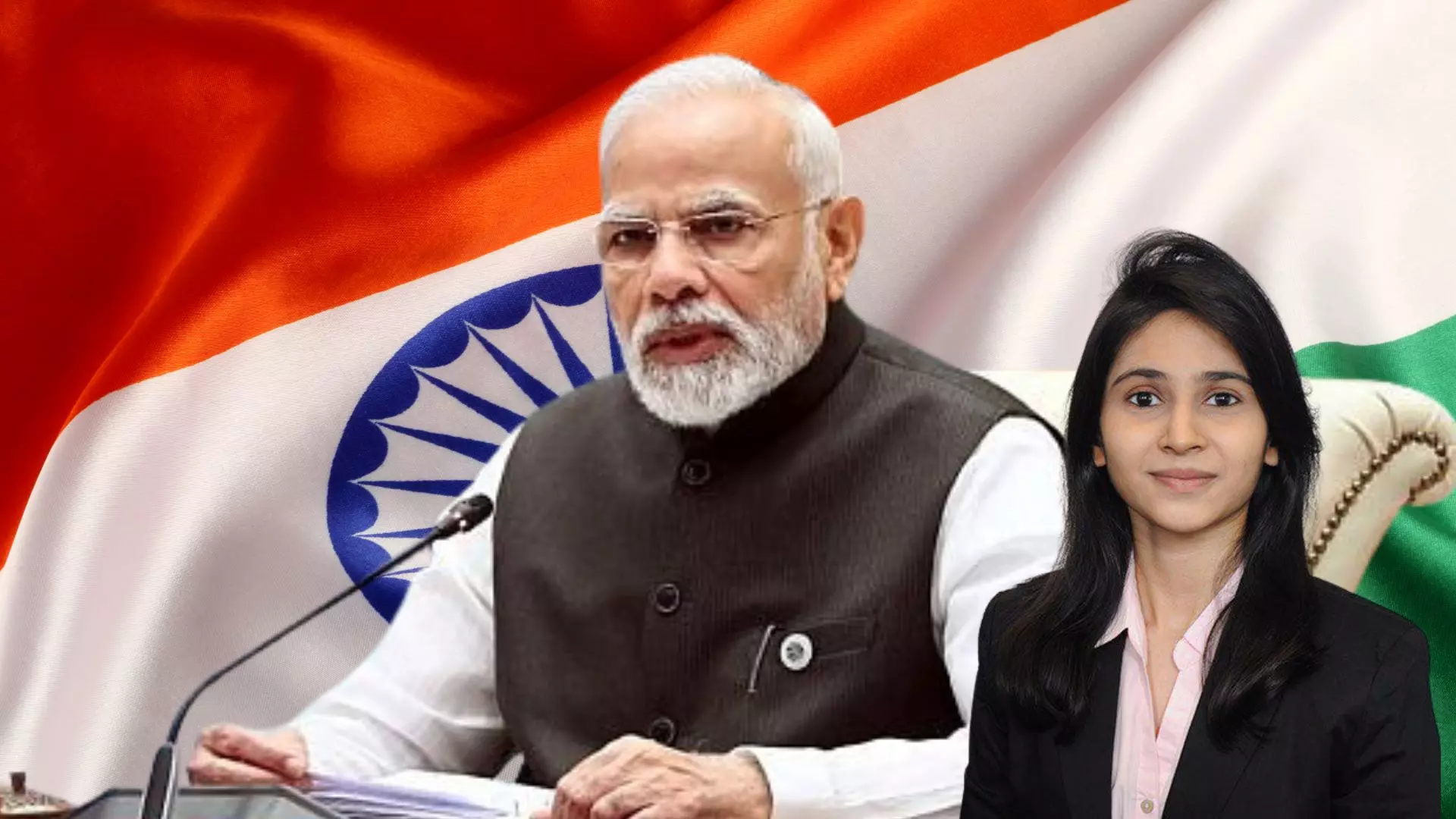
India at SCO 2025: 'Modi’s big test in Tianjin'
As Modi participates in SCO Summit in Tianjin, the world watches India’s balancing act between China, Russia, and the US; Vanshika Saraf decodes the happenings

As Prime Minister Narendra Modi attends the Shanghai Cooperation Organisation (SCO) summit in China —his first visit to China in over seven years—global attention is fixed on India’s balancing act. With tensions over US tariffs, a border standoff with China, and energy ties with Russia, the summit highlights India’s pursuit of strategic autonomy in a multipolar world.
In this conversation with The Federal, Vanshika Saraf, Research Analyst at the Takshashila Institute’s Indo-Pacific Studies Programme, explains what the SCO summit means for India’s foreign policy and its wider geopolitical positioning.
What can be expected from the bilateral meeting between Modi and Xi Jinping at the SCO summit?
The SCO summit is being watched closely because India-China relations have implications for the wider world. The meeting is unlikely to produce dramatic breakthroughs but will instead focus on managing tensions.
The central issue remains the border, where relations have been strained since Galwan. At best, the two leaders may agree on confidence-building measures such as improved communication channels or phased pullbacks. Progress is also possible on people-to-people engagement, as seen with the easing of visas and resumption of the Kailash Mansarovar pilgrimage route.
However, India has been clear that full normalization will not occur without complete disengagement at the border. The summit is therefore more about continuing dialogue than resetting ties.
How does Modi’s visit to Japan before the SCO summit fit into India’s multi-alignment strategy?
The sequence is significant. Japan has been one of India’s most trusted partners, especially in the Indo-Pacific. In recent years, defence interoperability has grown, along with cooperation in technology sectors such as semiconductors and artificial intelligence. Japan’s investments in India have also deepened.
The visit sends a message that India’s core alignments remain with like-minded partners such as Japan. By contrast, India’s participation at the SCO is aimed at engaging Beijing and Moscow on energy security, regional stability in Afghanistan and Pakistan, and preventing escalation of tensions.
The decision not to attend China’s upcoming Victory Day parade after the SCO summit further underscores New Delhi’s solidarity with Japan and its careful diplomatic signalling.
How significant is the revival of the Russia-India-China (RIC) troika at the SCO?
The RIC format has always been double-edged for India. On one hand, it symbolically places India, Russia, and China on the same platform. On the other, India-China ties have remained adversarial since 2020, limiting any substantive trilateral cooperation.
Even so, the revival of RIC is important in the current context of US tariffs and growing American pressure. For New Delhi, participation is about signalling strategic autonomy—showing that India is not beholden to any single camp and will engage across forums, even if it makes Washington uncomfortable.
RIC also reassures Moscow that it is not being abandoned and shows Beijing that dialogue can continue without illusions. It is less about convergence and more about preserving India’s freedom of action.
With US tariffs targeting India’s Russian oil imports, how does the SCO summit affect India-Russia relations?
The summit comes at a critical moment, just days after new US tariffs were announced. This makes Modi’s physical attendance at the SCO especially significant after skipping last year’s summit.
Russia remains indispensable for India as both an energy partner and defence supplier. Discounted Russian oil has cushioned inflation and strengthened India’s refining sector. Despite diversification, Russian platforms still dominate India’s arsenal. The SCO summit allows Modi and Putin to reaffirm continuity in these ties.
However, the risk lies in Washington’s reaction. A harder US sanctions regime could complicate financial flows, slow India’s access to advanced technology, and jeopardize progress on defence co-production with the US. India’s bet is that its central role in the Indo-Pacific will prevent Washington from pushing too far.
What other bilateral outcomes can be expected at the summit?
Bilateral meetings with China and Russia are expected, as not all issues can be resolved at the multilateral table. For India, the SCO’s credibility on counter-terrorism is in question, given the omission of the Pahalgam terror attack in earlier statements. Bilateral discussions provide a chance to raise such concerns directly.
With China, the focus may remain on rebuilding trust through small steps such as resuming direct flights, while with Russia, the agenda is likely to cover defence, energy, and regional security. These meetings will help disentangle sensitive bilateral issues from the larger summit’s political signalling.
The content above has been transcribed from video using a fine-tuned AI model. To ensure accuracy, quality, and editorial integrity, we employ a Human-In-The-Loop (HITL) process. While AI assists in creating the initial draft, our experienced editorial team carefully reviews, edits, and refines the content before publication. At The Federal, we combine the efficiency of AI with the expertise of human editors to deliver reliable and insightful journalism.

